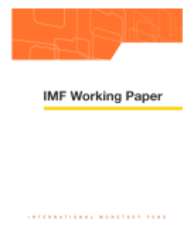
Currency Crises and Uncertainty About Fundamentals
This paper studies how uncertainty about fundamentals contributed to currency crises from both a theoretical and an empirical perspective. We find evidenceCbased on a monthly dataset of Consensus forecasts for six Asian countries in the period January 1995-May 2001Cconfirming the theoretical predictions (from both unique- and multiple-equilibria models) that: (i) speculative attacks depend not only on actual and expected fundamentals but also on the variance of speculators' expectations about them; and (ii) the sign of the effect of the variance depends on whether expected fundamentals are "good" or "bad." These results are robust to the definition of exchange rate pressure indices, the estimation sample (precrisis vs. full sample), the method chosen to avoid spurious correlations, and possible time-varying coefficients for the mean, the variance, and the threshold separating good from bad expected fundamentals.
Publication date: January 2002
ISBN: 9781451841916
$15.00
Add to Cart by clicking price of the language and format you'd like to purchase
Available Languages and Formats
| English |
Prices in red indicate formats that are not yet available but are forthcoming.
Topics covered in this book
This title contains information about the following subjects.
Click on a subject if you would like to see other titles with the same subjects.
Money and Monetary Policy , Money and Monetary Policy , Speculative attack , exchange rate crisis , public and private information , exchange rate , exchange rate pressures , probability , equation , predictions , Asymmetric and Private Information
Summary
Copyright © 2010 - 2025
Powered by:
AIDC



